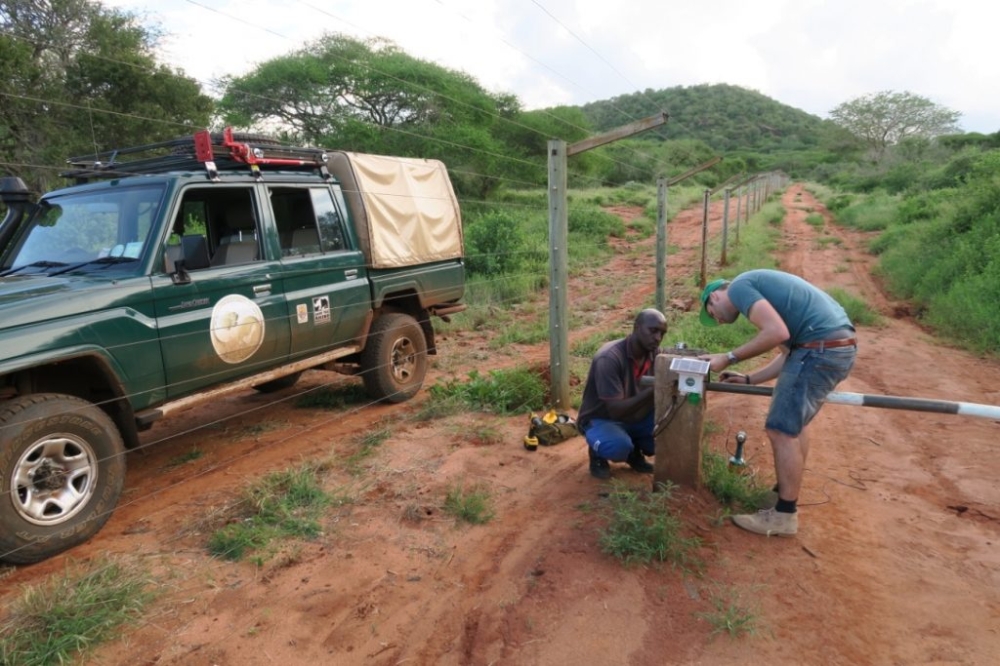

The government, in collaboration with NGOs and donors, allocates an estimated budget of approximately $80,000 every year towards the use of advanced technologies in conservation efforts across all national parks.
This investment supports the deployment of various tools and systems essential for monitoring, anti-poaching activities, and overall park management, ensuring the protection and preservation of biodiversity.
There are also plans to deploy drones, among other advanced technologies.
Eugene Mutangana, Conservation Management Expert at the Rwanda Development Board (RDB), shared insights into how these technologies are transforming conservation efforts across the four national parks namely Volcanoes, Nyungwe, Akagera, and Gishwati-Mukura.
"All four of our national parks are utilising advanced technology to support conservation efforts,” Mutangana said.
These parks have deployed various tools such as SMART (Spatial Monitoring and Reporting Tool), camera traps, EarthRanger, Esri (GIS and Remote Sensing), LoRaWAN, ASTRO radios, two-way communication radios, GPS collars, and VHF transmitters.
"However, traditional knowledge is used to complement modern technology, including methods like beating steel, using iron tools, and digging trenches to reduce human-wildlife conflicts.” Mutangana stated.
He explained the importance of data in the management of national parks.
"These data are crucial for research and play a key role in shaping park policies and conservation strategies,” he noted.
"Among the technologies to be applied are drones, artificial intelligence, aircraft, bioacoustics technology, and tools for park tourist visits.”
Akagera National Park among others is at the forefront of using advanced technologies to strengthen its conservation efforts and safeguard its biodiversity.
One of the significant advancements has been the use of remote sensing and satellite imagery. These tools allow park management to monitor vast areas, detect wildfires, and assess the health of ecosystems from above.
On the ground, GPS tracking devices have revolutionised wildlife monitoring. Key tourist attractions such as rhinos, lions, and elephants are fitted with GPS collars, which enables easier tracking of their movements.
This technology not only helps in understanding animal behaviour but also plays a critical role in protecting the animals.
Camera traps, strategically placed throughout the park, capture the secret lives of its inhabitants. These cameras provide invaluable data on animal populations and behaviours, offering insights that were previously unattainable.
For instance, the reintroduction of lions in Akagera in 2015 was closely monitored using these devices, helping to ensure their successful adaptation to the park.
However, implementing these technologies is not without challenges. High costs, technical expertise, data management, and community integration are significant hurdles.
"The cost of advanced technology can be prohibitive, especially for conservation organisations with limited budgets. Additionally, implementing and maintaining these technologies requires specialised skills that may not be readily available locally,” said Jean Paul Karinganire, Deputy Tourism and Marketing Manager at Akagera National Park.
"Engaging local communities and ensuring data security are also significant challenges. However, through strategic planning, community involvement, and collaboration with various stakeholders, we can effectively address these obstacles and leverage technology to support our conservation goals.”
Despite these challenges, the success stories from Akagera National Park demonstrate the transformative power of technology in conservation.
Anti-poaching efforts have been bolstered by technology. Park rangers now use a combination of cameras, sensors, and communication systems to detect and respond to poaching incidents swiftly. This integrated approach has reduced poaching incidents, safeguarding the park’s wildlife, according to the management.
"Technology has been a game-changer for us at Akagera National Park. The use of GPS collars, drones, and integrated data systems has not only enhanced our ability to monitor and protect wildlife but also allowed us to make informed decisions swiftly,” said Karinganire.
"This has been crucial in the successful reintroduction of species like the Black rhino and lions, and in significantly reducing poaching incidents,” he noted, adding that the reintroduction of black rhinos in 2017 "marked a significant milestone for Akagera”.
These rhinos, extinct in the park since the 1980s, were brought back with the help of GPS collars and VHF transmitters. Aircraft and camera traps monitored their movements and interactions, ensuring their successful acclimatisation.
The park’s lion population revival is another success story. GPS tracking and camera traps provided detailed insights into their movements, social structures, and hunting patterns.
This data was crucial for effective management and protection strategies, ensuring the lions thrived in their new home.


